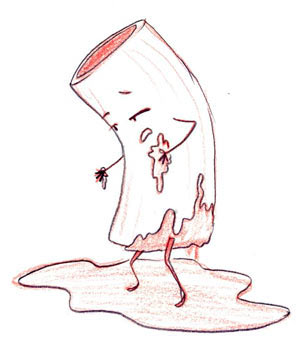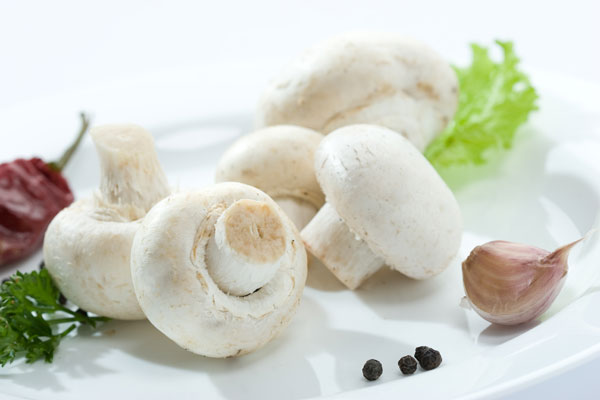Ten simple kitchen tips
You may already know some of these things. Or all of them. Or none of them!
If you do know them, chances are somebody told you, just like somebody told me, which puts a certain responsibility on both of us to make sure we tell someone else. Let’s make the world a smarter, tastier place.
 And if you don’t know, don’t worry! Some things on this list may seem basic, but I did many of them wrong for years and I still see plenty of people making the same mistakes. To help you reach these kitchen revelations sooner than later, here are 10 helpful facts and tips that you may or may not be aware of, in no particular order, numbered one through eight. (Because no. 2 contains three tips. Tricky.)
And if you don’t know, don’t worry! Some things on this list may seem basic, but I did many of them wrong for years and I still see plenty of people making the same mistakes. To help you reach these kitchen revelations sooner than later, here are 10 helpful facts and tips that you may or may not be aware of, in no particular order, numbered one through eight. (Because no. 2 contains three tips. Tricky.)
 Garlic tastes bitter when it browns, so keep a close eye on it when cooking. Many recipes start out with garlic sauteed in hot oil. When it’s nothing but garlic and oil in the pan, be especially vigilant, because there’s nothing else to absorb the heat.
Garlic tastes bitter when it browns, so keep a close eye on it when cooking. Many recipes start out with garlic sauteed in hot oil. When it’s nothing but garlic and oil in the pan, be especially vigilant, because there’s nothing else to absorb the heat.- Some things are better when they aren’t rinsed.
- Pasta. That hot starchy water that clings to the pasta is useful! It helps the sauce stick. If you rinse it, the sauce won’t coat the pasta as nicely. (Of course, if you’re not using a sauce, then rinse away.)
- Mushrooms. They’re like scrumptious little fungal sponges and when you rinse them, they absorb water and become kind of slimy. As long as you’re buying produce from a trusted source, you really just need to get dirt off the surface of the mushroom, so wipe it with a clean, damp paper towel instead. Of course, if you just can’t stand the thought of not rinsing, your slimy mushrooms will still be edible—but when it comes to cooked dishes please remember that it’s heat, not rinsing, that’s going to kill anything worth worrying about.
- Canned beans—or maybe not. Society hasn’t really come together on this yet. Rinsing canned beans is advantageous in that it reduces the salt content a lot; not rinsing them is sometimes preferable because the liquid in the can can help thicken certain dishes. My grandma said always rinse red beans, never rinse black, although depending on the dish it’s often fine to rinse black beans too. So while there isn’t necessarily a correct technique, it should be a decision you make on a case-by-case basis.
 Keep your hard boiled yolks yellow. The yolks of hard-boiled eggs won’t turn green if you run them under lots of cold water as soon as you remove them from the heat.
Keep your hard boiled yolks yellow. The yolks of hard-boiled eggs won’t turn green if you run them under lots of cold water as soon as you remove them from the heat.- Make easy-peel eggs. Eggs that have been in the fridge for several days are better for hard-boiling than brand-new eggs. Over time, oxygen seeps in through the eggshell, and having more air inside the egg makes the shell easier to remove after boiling.
- There’s a trick to thickening with cornstarch. It’s often better to use cornstarch than flour as a thickening agent—you don’t have to cook the flavor away, it doesn’t cloud up the sauce, and it thickens quite a bit faster—but sometimes, you get lumps, because cornstarch hates being added to hot liquid. No big deal: just dissolve the starch completely in a little bit of cold liquid before adding it slowly to the pot.
- Make pretty vegetable stock. Vegetable stock makes a delicious, nutrient-packed alternative to water in a lot of recipes, and it’s pretty much free, because you can make it from the veggie scraps you’d normally throw away. (That also means you know exactly what’s in it: no salt, color, additives or preservatives of any kind.) Freeze scraps in a bag rather than discarding them, and when you have enough in your freezer, boil them on the stovetop for an hour or two, then strain. To get great color, make sure to include yellow onion skins (but never red ones). When the broth is cool, divide it among freezer bags or into ice cube trays, so you’ll always have easy portions available.
 Know your pepper anatomy. An alert and helpful Knuckle Salad reader once pointed out to me that the seeds of any chili pepper (including jalapeño and habañero) are not, as I had previously believed, the hottest part. The white pith is. This new fun fact was confirmed in a later issue of Cooks Illustrated, which explained that while the seeds are about 10 times as hot as the flesh, the pith can be hundreds of times hotter than that.
Know your pepper anatomy. An alert and helpful Knuckle Salad reader once pointed out to me that the seeds of any chili pepper (including jalapeño and habañero) are not, as I had previously believed, the hottest part. The white pith is. This new fun fact was confirmed in a later issue of Cooks Illustrated, which explained that while the seeds are about 10 times as hot as the flesh, the pith can be hundreds of times hotter than that.- The fastest way to chill most things is in a salted ice bath. Saltwater has a lower freezing point than regular water (-2°–-20°F, depending on the amount of salt), so the salt will melt the ice into a liquid colder than 32°F.

I hope at least one of these tips has been helpful to at least one of you readers. I plan to post the next 10 tips as soon as as I’ve collected them… which, realistically, might not be for another 28 years.
- You can make vegetable stock by boiling the hell out of all the veggie scraps you’d normally throw away. To get great color, make sure to include yellow onion skins—but never red ones.
- The fastest way to chill most things is in a salted ice bath.
- Is there shrimp in your dish? Use the empty shells to flavor the water or oil that you’re going to cook other ingredients in.
- The seeds of any chili pepper (including jalapeño and habañero) are about 10 times as hot as the flesh, and the white pith that holds the seeds can be hundreds of times hotter than that.



